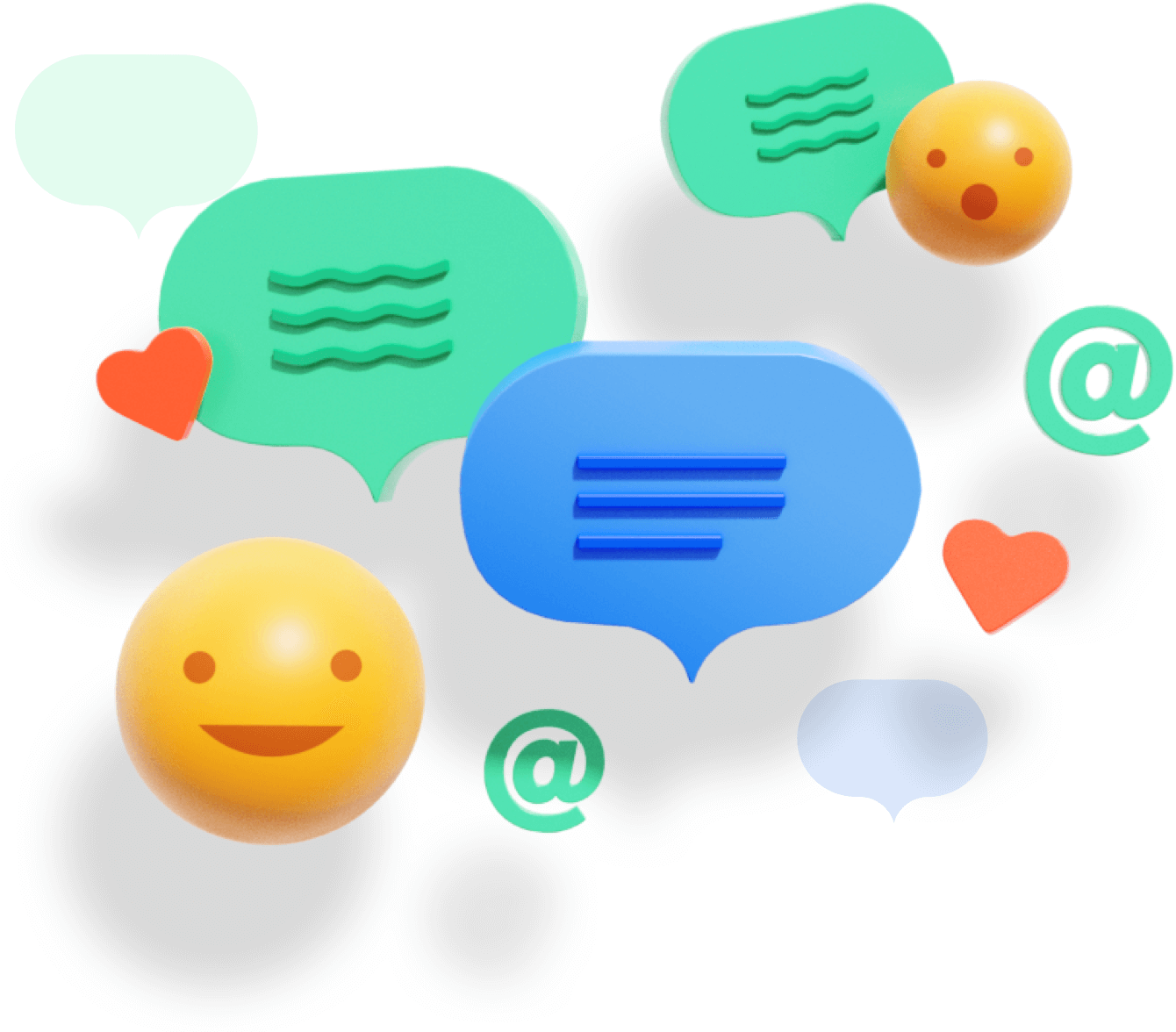You've heard the names: Group chat. Message-based platform. Team communication tool. Collaborative workspace. Team collaboration technology. Whatever you call it, the goal is the same: bring teams together in real-time.
But as team chat — as we'll call it — becomes indispensable for some, others have questioned its effectiveness. Is it helping us get more work done, or is it hurting our productivity?
To get to the bottom of things, we surveyed almost 1,300 people who use a team chat tool to understand the true impact it has on productivity in the workplace.
It gave us some enlightening and, we're happy to say, encouraging answers.
In addition to our survey, we conducted a series of informal interviews with workers of all stripes – different roles, companies, and levels of seniority.
Don't put team chat in a corner: It's quietly changing the way we work
The modern workforce is more diverse and digital than ever, and it relies less and less on the 9 to 5, clock-in, clock-out world of yesteryear. Today, fluid communication is vital for productivity, knowledge sharing, and consensus building. Team chat tools make that kind of real-time communication possible.
of companies
take advantage of collaboration tools
With more looking to adopt them in the future. 1
The workplace is changing - we're doing more, together
Closed systems
Old communication tools like fax, telephone, and even email are limiting. They're good for individual productivity, but poor for gaining shared context of work.
Open communication platforms
Today's communication looks very different. Real-time communication and collaboration provides plenty of shared context across local and distributed teams.
Work is no longer

the clock in, clock out world of yesteryear.
It's how today’s teams move their work forward together
Workers using a team chat tool find it essential for moving work forward, information sharing, and feeling connected to their teammates.
The effects of chat
Using team chat makes workers feel
More connected
More efficient
More productive
Tweet this
Workers who use a team chat tool:
They find it critical in moving work forward, information sharing and feeling connected to their teammates.
Team chat comes with its own set of challenges (and not the ones you'd think!)
Many organizations worry that a workplace communication tool will be used for non-work purposes and become a drain on productivity. What we learned is they can lead to overwork more than anything else:
Always Available
40% of people say their use of chat at work has significantly increased their colleagues’ expectations that they're always available
Expectations of immediacy
42% of people are “constantly” checking their chat tool, with 78% feeling some pressure to always be available in chat
Always on
When it comes to messages received after hours, 6 out of 10 chat users (60%) will respond to them
Overwhelm
77% of people receive a message on chat at least several times an hour
Too many tools
Workers use a median of 4.5 digital tools to communicate with coworkers. They reported having little guidance about which tools to use for different situations.
Pings, dings, chimes, vibrations, banners, badges, flashing lights.
We feel pressured to respond, to be always-on, always available. And we expect others to do the same.
A way forward in an always-on workplace: Sending signals and setting boundaries
Turns out, one person's noisy is another's communication sweet spot. Remote workers said pings and dings were welcome replacements for the missing hustle and bustle of in-person workplaces.
This was a eureka! moment:
Our survey revealed workers whose colleagues know their working preferences feel more connected, as well as more productive and highly engaged. Another 39% said they get more work done in a typical day by having their working style known, and 20% feel less stress and anxiety about missing a message.
It turns out, solving the problem of all this communication noise is about something deeper than what's usually talked about.
People want the freedom to tell teammates how to engage with them, and they want tools that enable them to send clear signals and set boundaries.
Survey says
Users whose colleagues know their chat style:
Feel more connected to their coworkers
Feel more productive
Feel highly engaged
Tweet this

Your guide to a happier, more mindful workplace
These insights are as much about practices as tools, but the holy grail is a tool that supports better practices. We discovered that just as learning about individual working styles allows users to feel more at ease and connected, specific guidelines may remove other uncertainties.
Here are 5 guidelines to get you started, straight from our team's playbook:
It's up to each individual to manage — and communicate — their boundaries
Your coworkers should feel free to send you a message. Take the necessary steps to communicate you're unavailable or away.
Non-work interactions make for a stronger, more efficient team
When people know the people they work with, they work better together.
Eliminate ambiguity with openness
More details about what you're doing puts co-workers at ease. Let teammates know you're working from home, out of the office, or focusing on deep work.
Acknowledge and embrace diversity in communication styles
Everyone on the team benefits when individual working styles and chat preferences are known. This helps clarify expectations and availability.
Be clear about the designated purpose of each of your communication tools
Chances are, you're using 4 to 5 tools to communicate with your coworkers. Be clear about which platform to use in specific situations. This helps ensure your discussions will be more intentional and on-topic.
...Or opt for a connected communication platform
To really move the needle on team productivity, consider a platform that's integrated with all the tools you use everyday. These have built-in functionality beyond messaging so you can do more as a team.
Remember that implementing new practices takes, well, practice. Adopt a growth mindset, experiment, and try new things. Engage with your teammates and have open conversations about working and communication styles. With the right tool, used with consistent and reliable practices, co-located and distributed teams alike can experience the promise of today's workplace communication.
Share this page
With the right tool, used with consistent and reliable practices,
co-located and distributed teams alike can experience the promise of today's workplace communication.

Right-sizing and the teeter-totter: how one CEO built a culture of balance

4 badass women who
moved workplace culture forward

